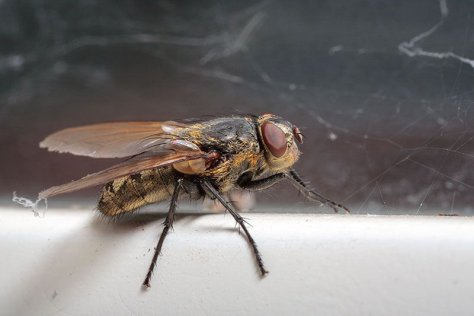Life of a cluster fly
Photo: Urmas Tartes
Translation Liis
Common cluster fly
Common cluster fly Limukakärbes Pollenia rudis
This fly species spends the winter as a mature insect, an imago, in our country homes (particularly in wooden houses where it is easy to hide in the cracks in the wood). Some years they occur in quite large numbers – you heat the house and on the window panes a swarm of buzzing flies gather. You open the window and send the buzzers off which was just what the creatures were waiting for. They also winter in attics and woodsheds and in crevices in other sheltered places, such as bark cracks in the forest. There are many other hiding places where birds cannot catch them and they are concealed from spiders. On floors mice look out for what spills out from cracks. The wintering period is when cluster flies meet with humans; they do no damage and as far as is known do not spread diseases – at least researchers have not found so.
They are a little larger than our most familiar fly, the housefly; some are up to a centimetre long. Body colour is olive grey to brown, with a chequered pattern on the abdomen, and the hairs on the thorax are proudly ”golden”. But especially the life cycle of cluster flies is worth attention.
The lodgers that we threw out of the house lay their eggs on the ground, but not in just any arbitrary spot. You may have noticed that earthworms too have become quite active now. Cluster flies lay their eggs into earthworm passages, and then perish. The eggs develop into larvae and maggots that hook on to earthworms passing by them. The parasites feed on the living tissues of the earthworms that eventually die from this damage. The hatched cluster flies start flying about only in autumn, searching for suitable wintering places. And so their generations and year cycles go on.









